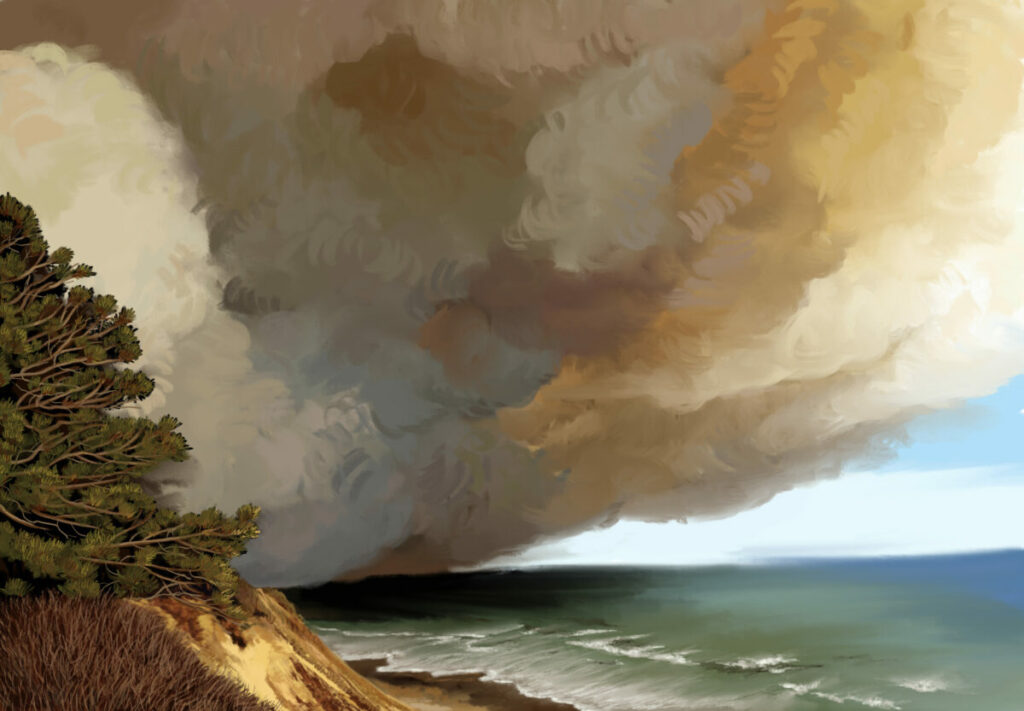Fire Pit Safety Tips
Stay safe around the campfire with tips from the Western Fire Chiefs Association. Learn essential precautions and practices for a worry-free outdoor campfire.
Learn how long wildfires last, and how climate change is affecting fire season with information and resources from the Western Fire Chiefs Association (WFCA).
Published:October 25, 2022
Edited:March 4, 2024

Learn how long wildfires last, and how climate change is affecting fire season with information and resources from the Western Fire Chiefs Association (WFCA).
Wildfire season in the United States lasts longer every year. The problem of persistent wildfires is more complex than the length of the season; not only are states like California at a higher risk of wildfires for a greater number of months, but individual fires are also burning for longer periods of time than a few decades ago.
As wildfire incidents rise in number and duration, you may be wondering why this is happening. The answer is simple: climate change is taking place, and it is already drastically affecting the wildfire season.
Climate change is an ongoing process by which the Earth is gradually warming. The reason for this phenomenon is the increasingly negative impact that humans have on the environment, particularly through the excessive burning of fossil fuels.
Burning fossil fuels produces greenhouse gases. These gases, which include methane and carbon dioxide, can be naturally occurring but have increased to a dangerous quantity because of human activities. Once these gases are produced, they travel into the atmosphere. There, they trap heat from the sun that reflects off the Earth’s surface inside the atmosphere instead of sending it back out into space.1
This warming system, compounded by human action, throws off the Earth’s natural weather patterns and causes the air to become hotter and drier in some parts of the world, like the western United States.
As the air becomes drier, rain clouds cannot form. The less rain that falls, the less moisture develops in the soil. Bodies of water begin to dry up, and even the wind becomes hot and devoid of humidity. These conditions form what is known as a drought, which makes the risk of wildfire significantly higher.
Climate change is directly affecting wildfire season in the form of prolonged droughts. In a water-deprived environment like California, dried vegetation and trees become fast-burning fuel for wildfires. Meanwhile, the hot, dry wind carries embers for miles through the air, where they often land on trees or structures, spreading the fire.
Understanding climate change helps us to conceptualize why the fire season in the US is trending longer each year. However, to find out just how long wildfires burn and exactly how the season has adjusted, it is helpful to compare statistical data from the past several years.
To see how the fire season is changing in the US, we compare current trends to past data.
The US Department of Agriculture stated in 2021 that fire seasons that once lasted around four months are now taking anywhere from six to eight months to end.2 That is over half of the year, during which local and state governments, firefighter associations, and essential resources like water are under strain.
Aside from the extended duration of fire season, fires are also lasting longer. According to Face the Facts USA, wildfires in the US before 1986 lasted an average of 8 days. In 2013, that average was 37 days.3
Fires are also burning up more acreage. The number of acres burned annually in the US has gradually increased since 1980, with a notable uptick beginning in 2000. In 2020 alone, the US saw a total of 10,274,679 acres burned – the most recorded in the nation’s history.4

The outlook for fire season may seem grim, but the good news is there are things we can do to help, both on a small and a large scale.
On a small scale, it is important to prepare for wildfires, especially if you live in an area where the risk of wildfire is high. Below are some actions you can take right away to protect yourself and your loved ones, now and in the future.
90% of wildfires are human-caused.5 It is our responsibility to put an end to negligent practices that can cause wildfires, and to foster a prevention mindset.
With or without human action, wildfires will always occur. You can protect yourself and your loved ones by turning your property into a defensible space.
An important part of preparing for wildfires is ensuring your home is as protected as possible from catching fire and burning. This process is called home hardening. Learn more about it by clicking here.
Looking at the bigger picture, we can help reduce the occurrence of wildfires by reducing our own greenhouse gas emissions, and supporting sustainable practices with our time, dollars, and votes.
Another important action you can take is to educate yourself. Knowledge is power and reading these wildfire education resources will help you become an expert in how wildfires occur, the types of wildfires, how to evacuate, and more.
Stay safe around the campfire with tips from the Western Fire Chiefs Association. Learn essential precautions and practices for a worry-free outdoor campfire.
Discover essential firework safety tips to ensure a dazzling display without accidents. Learn how to celebrate responsibly with expert guidance from WFCA.
Explore the role of AI in wildfire prediction with guidance from the WFCA. Learn how advanced algorithms and data analytics enhance early detection and response.